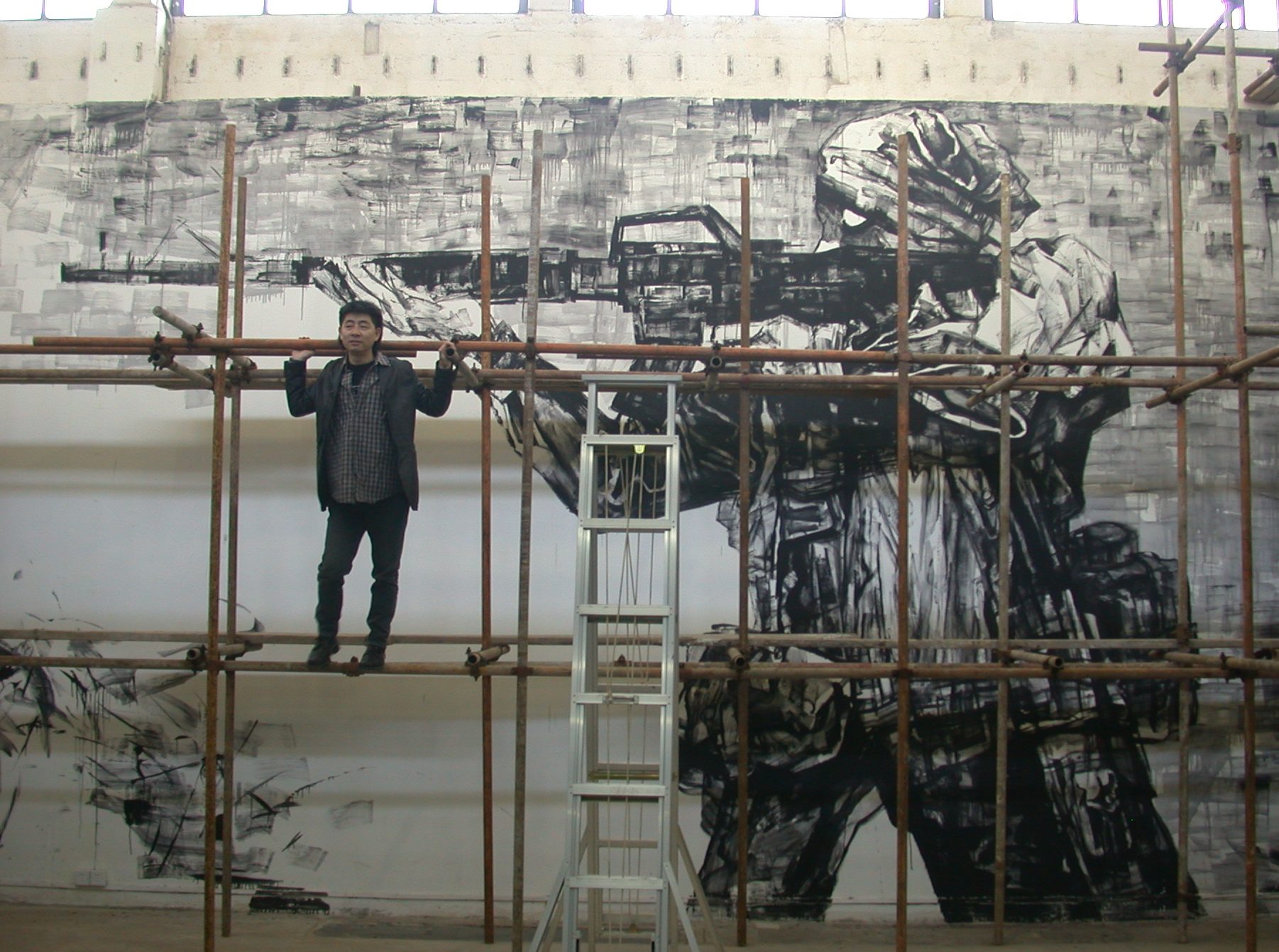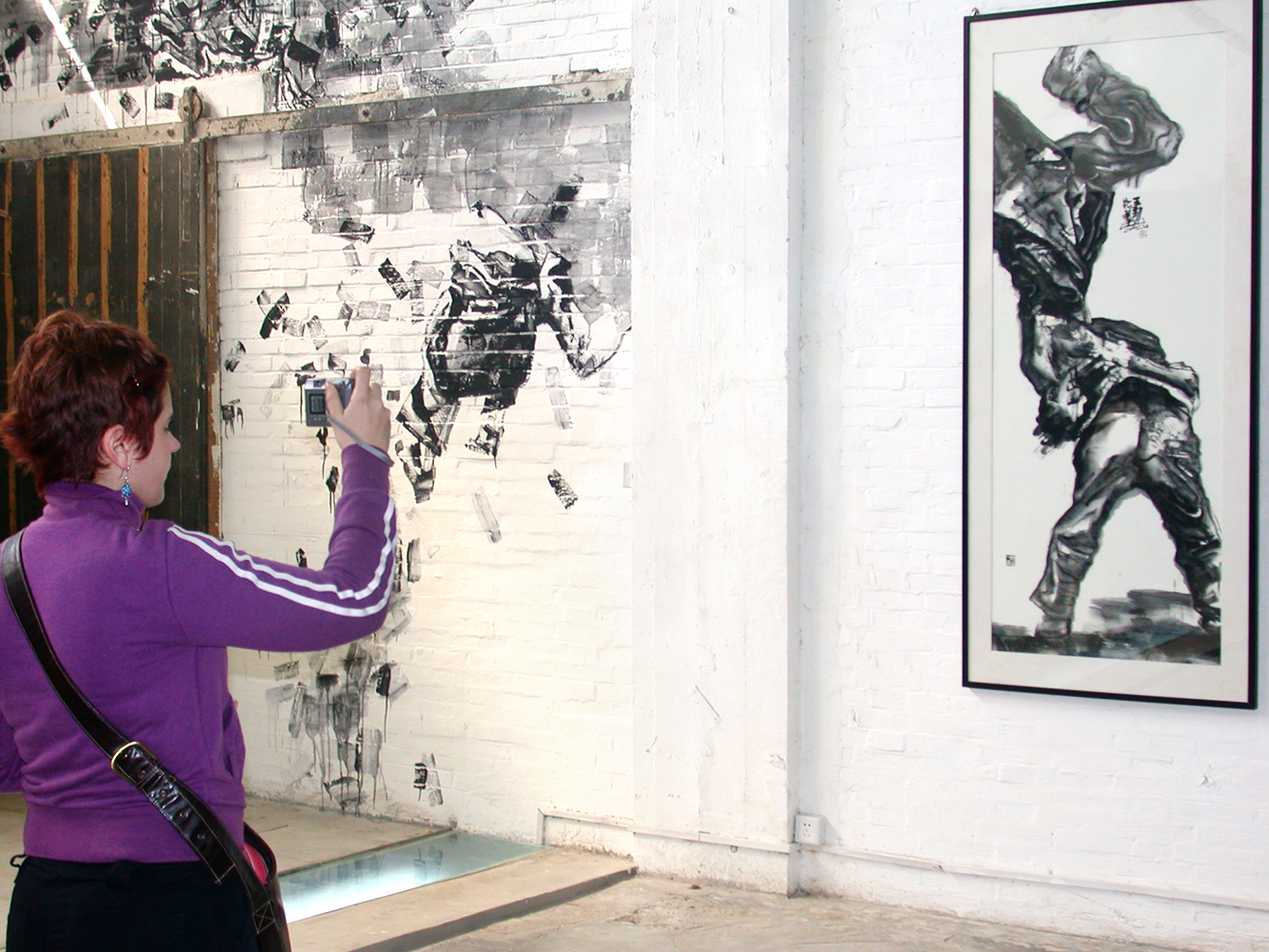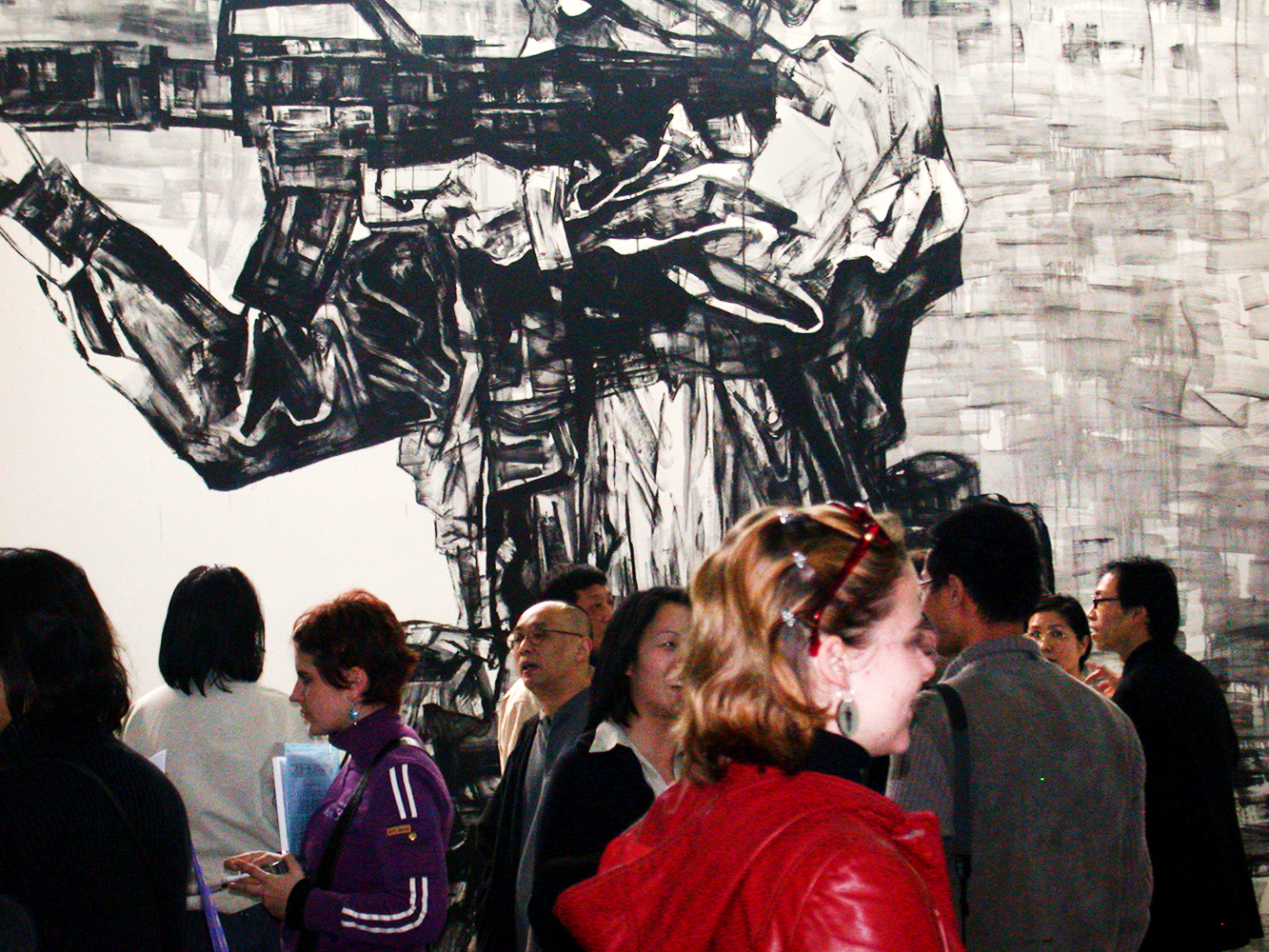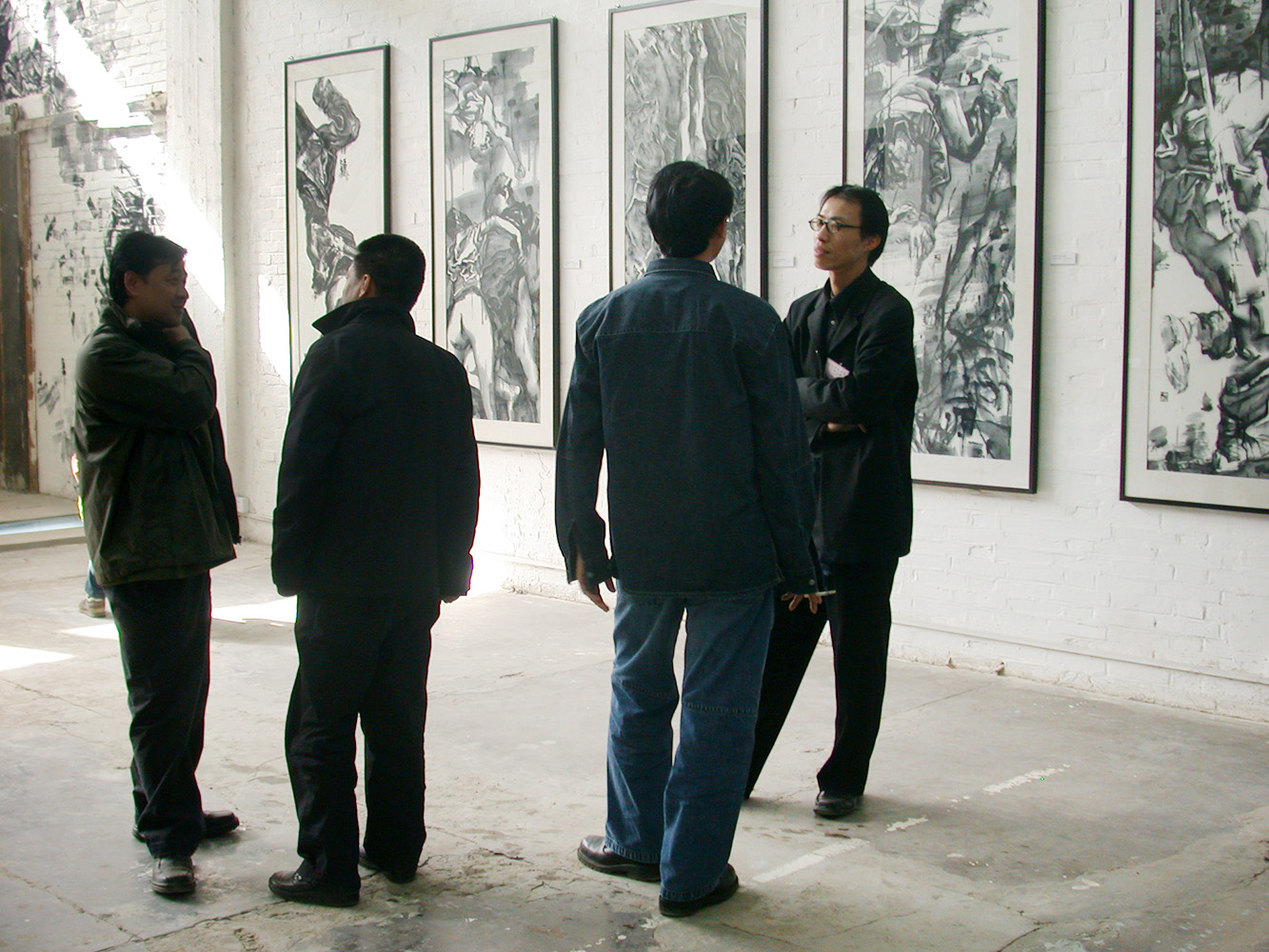25000 TAGS
Wang Jingsong: Operation Ink Freedom
Location: 25000 Cultural Transmission Center,Beijing
Duration: April 5 – May 8, 2003

The inaugural exhibition of the 25000 Cultural Transmission Center (Long March Space) is a solo show by Wang Jinsong, entitled "Operation Ink Freedom." A member of the so-called New Generation and a representative personality of post-89 Chinese art, Wang Jinsong became known for his oil painting, conceptual photography, installations, and video works. This exhibition, however, shows Wang Jinsong's little-known corpus of ink painting. This battle in ink has been brewing for some time, planned secretly. Its result is to liberate ink and wash painting, a staple of classical Chinese art. The curating and preparation of this exhibition adds another element to the project, arousing the viewer's imagination of the exhibition space itself; what it might have felt like as a workshop in an earlier era of full-fledged industrial production.
Situated in the burgeoning Factory 798 art community in Dashanzi, Chaoyang District, Beijing, the 250-square meter 25000 Cultural Transmission Center is not simply a space for art, but a site for curatorial experimentation, a place to research and present the relationships between display culture and artistic creation, practice and discourse, art objects and texts, viewer and artwork.
Originally built with aid from the Soviet Union, the dilapidated factory chambers of 798 are now filled with newly opened independent art spaces, galleries, design studios, artists' residences, and multi-function fashion / dining / performance / exhibition spaces. On April 13, all spaces in the Dashanzi area will participate in "Remaking Factory 798," a project which has already attracted the attention of society and the media.
A radical artist enters into dialogue with space and time in a workshop 7 meters high. He uses ink. The word "traditional" comes out to play. Very, very dangerous.



The inaugural exhibition of the 25000 Cultural Transmission Center (Long March Space) is a solo show by Wang Jinsong, entitled "Operation Ink Freedom." A member of the so-called New Generation and a representative personality of post-89 Chinese art, Wang Jinsong became known for his oil painting, conceptual photography, installations, and video works. This exhibition, however, shows Wang Jinsong's little-known corpus of ink painting. This battle in ink has been brewing for some time, planned secretly. Its result is to liberate ink and wash painting, a staple of classical Chinese art. The curating and preparation of this exhibition adds another element to the project, arousing the viewer's imagination of the exhibition space itself; what it might have felt like as a workshop in an earlier era of full-fledged industrial production.
Situated in the burgeoning Factory 798 art community in Dashanzi, Chaoyang District, Beijing, the 250-square meter 25000 Cultural Transmission Center is not simply a space for art, but a site for curatorial experimentation, a place to research and present the relationships between display culture and artistic creation, practice and discourse, art objects and texts, viewer and artwork.
Originally built with aid from the Soviet Union, the dilapidated factory chambers of 798 are now filled with newly opened independent art spaces, galleries, design studios, artists' residences, and multi-function fashion / dining / performance / exhibition spaces. On April 13, all spaces in the Dashanzi area will participate in "Remaking Factory 798," a project which has already attracted the attention of society and the media.
A radical artist enters into dialogue with space and time in a workshop 7 meters high. He uses ink. The word "traditional" comes out to play. Very, very dangerous.




